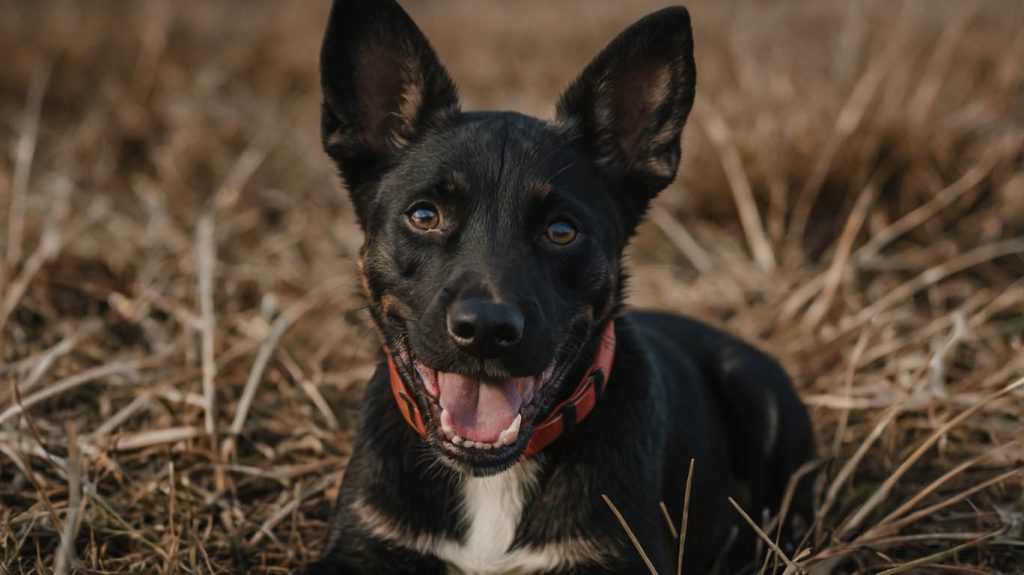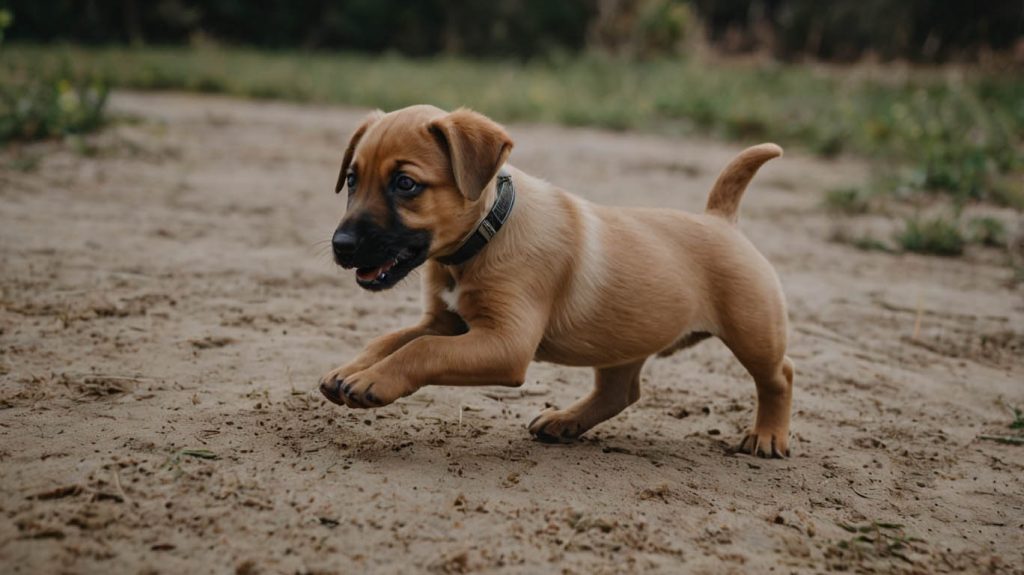You brought home an adorable, fluffy bundle of joy. The first few days were pure bliss, filled with cuddles and clumsy play. However, you’ve recently noticed that your sweet puppy has developed a new, rather painful habit. Your hands, ankles, and pant legs have become the unfortunate targets of needle-sharp teeth. This is the moment every new owner faces, and it immediately prompts the urgent question: how to stop puppy biting fast?
First, take a deep breath. This behavior, often called “play biting” or “nipping,” is a completely normal and critical part of puppy development. It does not mean you have an aggressive dog. Rather, it’s how puppies explore the world and learn the rules of social interaction. Therefore, your job isn’t to punish the biting, but to teach your puppy how to control the pressure of their jaw—a skill known as bite inhibition. This guide will provide you with the effective, humane strategies you need to do just that, and do it quickly.
Why You Must Learn How to Stop Puppy Biting Fast
Before diving into the techniques, it’s essential to understand the “why” behind the bite. Puppies are not being malicious; they are simply doing what comes naturally.
- Learning Bite Inhibition: In a litter, puppies bite each other constantly during play. If one puppy bites another too hard, the bitten pup will yelp and stop playing. This teaches the biter a valuable lesson: “If I bite too hard, the fun stops.” You must now take on the role of their littermate and teacher.
- Teething Discomfort: Just like human babies, puppies experience discomfort as their adult teeth come in (usually between 3 and 6 months). Chewing helps alleviate the pressure on their sore gums. If they don’t have an appropriate outlet, they will naturally turn to the closest thing available—you.
- Exploration and Play: Puppies use their mouths to explore textures and engage in play. It’s their primary way of interacting with their new environment.
Understanding this context is the first step in learning how to stop puppy biting fast. You’re not fighting against your puppy; you’re guiding their natural instincts toward more appropriate outlets.

Core Strategies: How to Stop Puppy Biting Fast in Action
The key to quick success is consistency and employing the right methods. Not every puppy responds to the same technique, so it’s helpful to have a few in your toolkit.
Master Bite Inhibition: The Foundation of How to Stop Puppy Biting Fast
This technique mimics how puppies learn from each other. The goal is to teach your puppy that human skin is sensitive.
- Engage in Play: Play calmly with your puppy, but keep your hands accessible.
- React to the Bite: The moment you feel their teeth make more than gentle contact with your skin, let out a sharp, high-pitched “Yelp!” or “Ouch!” sound. It should be surprising, not angry.
- Withdraw Immediately: As you yelp, pull your hand away and let it go limp. Stop all play for about 15-30 seconds. This shows a clear consequence: when you bite hard, the fun and attention disappear.
- Resume Play: After the brief pause, you can re-engage your puppy in play. If they bite hard again, repeat the process.
Important Note: For some high-energy puppies, a yelp can actually excite them more. If you find this is the case, skip the sound and simply use a firm “Nope!” before immediately withdrawing your attention. The withdrawal of play is the most powerful part of this lesson. This is a foundational skill for anyone wanting to learn how to stop puppy biting fast.
The Power of Redirection: Your Most Effective Tool
Redirection is arguably the most crucial and effective technique. It doesn’t just stop the bad behavior; it actively teaches the good behavior you want to see instead.
- Anticipate the Bite: As you play, watch for signs that your puppy is about to nip you.
- Interrupt and Redirect: Just before they make contact, or as soon as they do, interrupt them with a cue like “Ah-ah!” and immediately present them with an appropriate chew toy or teething ring.
- Praise the Correct Choice: The instant your puppy latches onto the toy instead of you, praise them lavishly. “Yes! Good job! What a good puppy!” This positive reinforcement makes them want to chew on their toys.
Always have a toy handy during playtime. Keep them in your pockets or scattered around the rooms where you interact most. This makes redirection seamless and is a cornerstone of how to stop puppy biting fast.
Using a “Reverse Time-Out”: A Clear Consequence for Biting
If the yelping and redirection aren’t enough, a “reverse time-out” can be extremely effective. Instead of putting the puppy in a crate, you remove the most valuable thing: yourself.
- When Biting Occurs: If your puppy bites you and doesn’t respond to the initial cues, say “Too bad!” in a neutral tone.
- Leave the Area: Immediately stand up and walk out of the room or step over a baby gate, leaving the puppy alone for 30-60 seconds.
- Return and Restart: After the short time-out, return to the room and re-engage. Don’t make a big deal out of it. If the biting resumes, repeat the time-out.
The puppy quickly learns that biting you makes their favorite playmate disappear. This method is incredibly powerful because it uses social isolation, a consequence dogs understand instinctively.

Proactive Solutions: How to Stop Puppy Biting Fast Before It Starts
The best way to stop puppy biting is to prevent it from happening in the first place. A tired, mentally stimulated puppy is far less likely to be a bitey puppy.
Provide an Arsenal of Appropriate Chew Toys
You cannot overstate the importance of this. A teething puppy needs to chew. Your role is to provide a “yes” for every “no.”
- Variety is Key: Offer a range of textures. Soft rubber toys (like a KONG Puppy), harder nylon bones (like a Nylabone), and even frozen toys can provide different types of relief. This variety keeps them from getting bored and seeking out your hands. This is a non-negotiable part of any plan for how to stop puppy biting fast.
- Rotate Toys: Don’t leave all the toys out at once. Keep a few available and rotate them every few days to maintain their novelty and interest.
Ensure Sufficient Exercise and Mental Stimulation
A bored puppy is a mischievous puppy. Biting is often a way to release pent-up energy or demand attention.
- Physical Exercise: Tailor the exercise to your puppy’s age and breed. Several short walks and play sessions throughout the day are better than one long, exhausting one. A tired puppy is a well-behaved puppy.
- Mental Stimulation: Mental exercise can be just as tiring as physical exercise. Use puzzle toys, snuffle mats, and short, fun training sessions (5-10 minutes) to work their brain. Teaching cues like “sit,” “stay,” and “leave it” gives them a “job” and strengthens your bond.
What NOT to Do When Learning How to Stop Puppy Biting Fast
Some old-school advice is not only ineffective but can also damage your relationship with your puppy and even make the biting worse.
- NEVER Use Physical Punishment: Do not slap your puppy’s nose, hold their mouth shut, or force them onto their back. This will only teach your puppy to fear your hands, which can lead to fear-based aggression down the line. It completely undermines your efforts to build trust.
- Don’t Encourage Rough Play with Hands: Avoid wrestling or letting your puppy chew on your fingers during play. This sends mixed signals and teaches them that hands are toys.
- Don’t Pull Your Hand Away Quickly: Jerking your hand back can trigger a puppy’s natural prey drive, making them want to chase and bite it even more. A calm, deliberate withdrawal is more effective.
Consistency is the Secret to Speed
The “fast” in how to stop puppy biting fast depends entirely on your consistency. Every single person in the household must be on the same page and use the same methods. If one person lets the puppy chew on their hands while another uses the yelp method, the puppy will become confused, and the training will take much longer.
Your Peaceful Home is Within Reach
The puppy biting phase is temporary, but the lessons you teach during this time will last a lifetime. By understanding why your puppy bites, consistently applying positive redirection and consequences, and proactively managing their energy, you can navigate this stage successfully. Be patient, be consistent, and soon you will have a well-mannered companion with a soft mouth, and your hands will be free of those tiny teeth marks for good.
What methods have you found most effective for puppy biting? Share your successes and tips in the comments below to help other new puppy parents!


